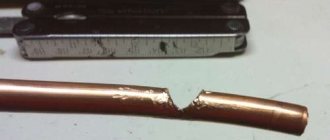Home » Building a house » Do it yourself
Olga Polyakova 07/30/2018
34438 Views
A garage is a place to store a car. However, no one ever designs garages so that only a car can fit in them. As a rule, after parking your mechanical friend there is still quite a lot of space left. Usually, it is occupied by some additional car accessories, such as a set of seasonal tires or a mini-wash. However, over time, the garage becomes a place for storing tools, various conditionally necessary things or items that have nothing to do with the car at all, for example, jars of pickles. Moreover, these items are almost always stored anywhere. Shelves, which you can make with your own hands at a minimum cost, will help you organize your garage in order. Not only will they help you organize things rationally, but they will also improve the aesthetics of your garage interior.
General design issues
Rack with shelves
First of all, you should forget about the first ideas that come to mind - creating the simplest hanging shelves, with a load or area that can accommodate all the property currently contained in the garage. Firstly, this is not rational from the point of view of their manufacture, and secondly, over time, the volume of things stored in the garage increases, so new and new designs will have to be made.
Therefore, it is immediately necessary to plan the design of the shelves in such a way that it is:
- universal
- expandable
- as easily movable as possible
That is, it is advisable not to make each shelf separately, but to make an entire rack consisting of several shelves as a single structure.
Rack with cabinet
The next important question is what the design of the rack will be - collapsible or not. Typically, non-removable structures are more durable and can withstand heavy loads, however, their disadvantages include difficulties in expansion, dismantling and transportation.
Collapsible structures are less stable , their rigidity is far from that of non-collapsible ones. Often, for additional stability, such structures have to be attached to walls. However, they have two special advantages - easy expandability and mobility. In addition, thanks to their modularity, shelving can be made in a variety of sizes.
In this case, the choice depends solely on the desires of each person.
FakeHeader
Comments 34
here's another option
Thank you all, I heard everyone. The point is that I need to distribute almost 50 kg of various hardware, from small to large.
Fuck I have 200 kg hanging on the wall
Literally over the weekend I bought such trays in castoram 26 rubles, the cheapest option I came across, one minus is only black, just as they wrote below, I bought a rail for cabinets 250 rubles 2 meters, until I hung them up I arranged them on the rack in columns of 5 pieces, and I’m already thinking about it Is there any point in hanging it? Access to them is convenient even in this position; there is also a place on the front part for a tag with the contents
Here's an intermediate version of how I hung them in the garage. In general, these trays are very versatile - I’m also thinking of buying the largest ones and putting them on the shelves, for example, salon chemicals, which I often use, because... It's inconvenient to take out of cardboard boxes. ps our small ones cost 27 rubles, consider it free. medium - 80. large - 126. pps You can also hang them on a “kitchen rail” for wall cabinets, but 2 meters - 256 rubles, and 2 meters of profile - 92 rubles + 2 meters of slats - 26 rubles
I took it from Leroy - I hung it on a 10-10-10 aluminum profile and a wooden slat - I still store hardware in cases, but small things that should be at hand all the time are very conveniently distributed in such trays
I use these, I bought them at Leroy Merlin, they’re convenient for me
Choosing a rack design
Collapsible rack
Most often, metal or wood is chosen as the material for garage shelving. Combinations of these materials are common. Plastic is rarely used.
The designs of shelving made of wood and metal can be as follows:
- Stationary , that is, designed and assembled for a specific room. Typically, a structure of this kind is assembled once, and to give it additional strength it is attached to the wall or floor (in some cases also to the ceiling)
- Mobile . It is possible to install the structure in different places, or the ability to constantly move it using rollers (wheels)
- Collapsible . The number of shelves, their height, and sometimes their length can be changed within arbitrary limits
- Hanging . Such structures are fastened to the ceiling or walls.
- A combination of different types or with exotic elements (for example, rotating, sliding). Usually, this is more of an aesthetic rather than a practical decision.
A separate group is represented by shelves for storing tools or shelf-containers for storing small parts - usually fasteners, as well as other “loose” items.
Tool storage panel
How such products are constructed is clear from their images. They are used quite often because they are very convenient to use and easy to manufacture. In addition, any available materials can be used as material for them.
Shelves made of many containers
Naturally, the layout of any rack, which includes calculating its dimensions and determining the number of shelves, should be based on the size of the garage, the parking space for the car, and the location of the doors and gates. In some cases, it will be optimal to use corner shelving.
Corner shelves
Tools and Fasteners
To create your own tool cabinet you will need:
screwdriver _ Select drills of the required diameter for the device in advance;- power saw or hacksaw . One of these tools will be needed at the preliminary stage for cutting boards;
- corners for fastening . To give the structure real strength, use special furniture corners. You may also need hinges, but only if you want to make a cabinet with doors;
- furniture screws and special nuts for them . They must be made of brass. The material does not rust and is highly durable. One of the minuses is the “biting” price of brass.;
- self-tapping screws Useful for auxiliary fastenings. However, you can do without self-tapping screws by using nails. Then stock up on a hammer as well.
Advice . For working with a wood screwdriver, galvanized screws are suitable, not steel ones. Their characteristics are the same, but steel ones are significantly more expensive.
The use of nails when assembling the structure is not recommended. It is no secret that the wood will dry out after a certain time, and the nails will not be able to provide sufficient strength.
Preliminary preparation
You should start by preparing a drawing. You can do it yourself, using, for example, frames offered for sale as a basis. It is necessary to calculate the overall dimensions of the shelves and the parameters of the base for them.
Moreover, their dimensions should be based on preliminary measurements of the space in the garage. If you take these measurements correctly, you can consider that half the job is already done.
Shelf drawing
- At the same stage, it is necessary to think about how the shelves will be connected to the frame, and the frame itself will be further strengthened by attaching it to the walls or floor.
- An important parameter here will be the height, since, in the case of low ceilings, it is advisable to make the frame height up to the ceiling, leaving no free space.
- Determining the distance between shelves is one of the important design points, since it is this that determines the rationality of distributing things across levels.
- Traditionally, the lower ones are made the most spacious: large and heavy equipment is placed on them; in addition, they are often used to store wheels and rims.
- Usually the following rule is used - the higher the shelf, the less weight should be placed on it and, accordingly, its height is lower. This can be explained quite simply – by increasing the stability of the rack as a whole.
- We should also talk about the depth of the shelving. Shelves that are too narrow make the entire rack impractical, and shelves that are too deep make it much more difficult to access. The optimal depth is 50-60 cm.
- The width is usually determined by the tensile strength of the material from which the shelves are made. There is no need to make the rack too heavy by making shelves more than 1.5 m wide (this will require too thick iron or wood so that they do not sag under the weight). Usually the width is about 90-150 cm.
Let's look at the most popular shelving devices that you can make yourself.
Scheme and drawing
To assemble a high-quality tool cabinet at home, you cannot do without a good drawing. You can create a drawing yourself, but it is better and easier to find a ready-made sketch on the Internet.
When creating a cabinet for your own needs, you don’t have to worry too much about carefully drawing out the design, but only draw a modest sketch. Preliminarily determine the dimensions of the back and side walls, and also pay attention to the dimensions of the lid and tray.
Advice . When planning shelves, do not forget about the thickness of the boards, which will “destroy” part of the free space.
Be sure to adjust the drawers to the size of the shelves (minus 5-6 mm for freedom of movement). It is strongly recommended to make the boxes removable, which will make working with the tool easier. When designing, it is best to plan to place the tools in the drawers in one row and one layer. This will make working more comfortable and also allow you to create a shallow cabinet.
Simple wooden shelves
Wooden shelving in the garage
Most often, in garages, a simple stationary structure is made independently, located along one or two walls. In the latter case, it can be considered a corner.
This type of shelves has the following advantages:
- low cost compared to metal;
- simple and quick assembly without the need for metal processing (in particular, without welding);
- ease of maintenance;
- naturalness and good aesthetic qualities;
- with proper wood processing and care, a relatively long service life and high structural strength
An approximate view of such structures is given below.
Garage rack
The procedure for making such a structure is as follows:
- The materials from which the racks and the shelves themselves will be made are selected. Hardwoods (larch, oak) are suitable for racks, but, in extreme cases, ordinary pine can be used. The shelves themselves can be made from almost any wood material. Even plywood, chipboard or OSB can be used
- The racks should be made of timber with a cross-section of 10x10 or 5x10 cm. The cross members between the shelves are made from the same timber to give structural strength
- Shelves are cut from the selected material according to measurements
- All structural elements should be treated with an antiseptic before installation to avoid rotting or fungus
- The structure is assembled from racks and crossbars. If necessary, it is additionally reinforced with metal corners and attached to the wall, floor or ceiling
- The racks are marked vertically in the places where the shelves will be attached to them. Their fastening is carried out in various ways: self-tapping screws, tenons, and wood glue are used. In rare cases, dowels are used. Don’t forget about traditional nails, unlike self-tapping screws, they are less likely to come loose. To give extra strength to the shelves, they can also be mounted on metal corners
- After assembly, the ends of the rack are processed, and then the entire structure is varnished or painted
VIDEO: How to make a shelf out of wood
Shelves in the garage: order comes first. General design issues, simple options, step-by-step instructions for making your own (75+ Photos & Videos) + Reviews
How to handle the organizer
Like any other thing, this device needs proper handling and care. The first will help extend the life of the organizer, the second will help prevent or correct possible breakdowns.
The list of such actions includes:
- Checking the structure for cracks or other mechanical damage;
- Depending on the type of material chosen, its surface must be subjected to special treatment from time to time to prevent rapid wear;
- It is strongly recommended to calculate the load-carrying capacity and capacity of the structure in advance, so as not to overload it in the future, thereby leading to breakdown;
- If the organizer or shelf is portable, it must be handled with care;
Depending on the material, the fixture should not be placed in areas with an unsuitable environment. For example, hang wooden shelves in rooms with high humidity, etc.
Wooden shelves with metal frame
Rack with metal frame
An alternative design option, which is a more expensive, but at the same time more durable and durable solution. The racks in these shelves are made of metal, and the surface of the shelves itself is made of wood or any materials of wood origin.
Such a rack has a higher resistance to moisture and mold. It is more resistant to heat and fire. Moreover, by using metal parts, they can be made dismountable, which will allow you to change the appearance of the structure according to any desire of the garage owner.
Materials and tools needed for work
Corners for shelving in the garage
The racks of such a rack are made from rectangular pipes or from a profile with a width of one of the sides of 5 cm. A 30 mm corner is best suited as crossbars.
The frame is made from a corner, and the thickness of the shelf should be from 1.5 to 3 cm (along the height of the corner). Crossbars made from angles can be attached to the guides in different ways - by welding or using bolts. It all depends on the wishes of the owner.
If you need a durable structure, then welding is preferable; if you require the versatility of the product with the possibility of its further modernization, you should use bolts. The use of bolts allows, for example, to change the height of each level.
Shelves can traditionally be made from any material on hand - from pine to OSB. For reasons of strength, their thickness should not be less than 12-15 mm.
For work you will need the following set of tools:
- drill (screwdriver)
- Bulgarian
- wood hacksaw
- corner
- level
- welding machine (optional)
Manufacturing procedure
Corner shelving frame
Assembling the rack is best done in a free room , and it is advisable to empty the garage of unnecessary things and remove the car from it.
After assembling the frame, it should be screwed to the wall. The assembly sequence is as follows:
- Based on the finished measurements, the material of the racks and corners for the shelves is cut using a grinder
- The racks are marked in those places where shelves will be attached to them
- The corners are bolted to the posts (or welded in the case of a stationary structure). In this case, it is extremely important to maintain a connection angle of 90°, otherwise the structure will turn out skewed
- Similarly, the racks are connected to each other using crossbars, but in this case, right angles must be maintained not only between the racks and crossbars, but between the crossbars and the previously attached corners
- The assembled structure is installed in its place and screwed to the walls and floor. This can be done, for example, using anchor bolts
- The metal frame is sanded using a grinder with an appropriate brush attachment and coated with a primer or paint containing a primer. At this stage, in order to facilitate the labor-intensive process of mechanically cleaning the frame from rust, you can use a chemical rust converter. Typically, converters require a day to dissolve the rust; after which surfaces can be painted without any mechanical or chemical treatment
- After the paint has dried, shelves are cut out of wood or wooden materials and adjusted in size to the finished frame structure
- The shelves are sanded, painted or varnished, and then attached to the frame using bolts or self-tapping screws
VIDEO: DIY universal shelves
Shelves in the garage: order comes first. General design issues, simple options, step-by-step instructions for making your own (75+ Photos & Videos) + Reviews
Advantages of tool shelves
Speaking about the obvious advantages of using shelves, one cannot fail to mention the following:
- All work supplies are always in one place: a man will not have to run around looking for a hammer, pliers or a jar of screws in different parts of the room, because everything will always be at hand.
- The man himself decides what and where to place it, so instead of chaotic throwing, he will know exactly where this or that tool is.
- Compact and space-saving. Today, the market offers countless models of organizers of this kind, which in turn helps you choose an option that will accommodate your existing arsenal and at the same time will not take up much space in the pantry.
- Such an organizer will be convenient to transport from one place to another.
This is a device that can be made independently - this does not require special skills or tools.
Shelves for storing heavy items
Metal shelving
Typically, metal shelves are used to store very heavy items or items with large dimensions. To securely store things on them, it will be better if they are made as stationary structures.
This approach immediately eliminates bolts as a connecting element. You can buy stationary metal products, the connections of which are provided using various grooves and guides, but this will no longer be an independent production, in addition, such structures are very expensive.
Therefore, it is recommended to use welding to create entirely metal shelves. The use of bolts is allowed in non-critical joints, or where they are assigned the role of fastening light elements.
Metal rack
- As usual, manufacturing begins with the creation of a drawing or sketch . In this case, their location plays an important role. It is advisable to place such products near strong, solid walls. It is possible that a significant part of the load when attaching the rack to the wall will fall on the wall, and if it is of a decorative nature, unpleasant incidents are possible.
- For such shelves, it is best to choose not square profiles as frame elements, but ordinary corners , but with dimensions of at least 50 mm. Often the creation of such products is made not from a frame, but from a wall mount.
- The frame elements are first marked and cut out using a grinder , and then welded into a single structure using a welding machine. At all stages, you should check the right angles of the rack elements: between the racks, crossbars and fasteners.
Frame for metal shelves
- The shelves themselves are made of perforated or rolled steel with a thickness of 1 to 5 mm. Its thickness is determined solely by the desire of the owner.
- At the same time, one should not forget about the weight of the structure . A sheet of rolled steel with dimensions of 50x100 cm and a thickness of 3 mm weighs almost 12 kg, and a sheet with the same dimensions and a thickness of 5 mm weighs almost 20 kg. In addition, do not forget about the cost: a sheet measuring 1000x500x3 mm will cost about 2-3 dollars.
- An alternative would be to use wooden shelves . In this case, you should choose wood with a thickness of 2.5 to 3 cm, which will first need to be treated with a fire retardant to increase its fire resistance.
- These boards can be connected to the frame using bolts. Metal sheets are also attached to the boards with bolts or self-tapping screws. In this case, it is better not to use welding so as not to destroy the wooden elements.
Upon completion of the work, the entire structure must be cleaned of rust and painted.
How to make wall shelves for tools
To make shelf parts you will need a drawing with the required dimensions, which can be selected on the relevant websites. Or you can use your talents exclusively. The height of the shelf should not be higher than the height of the owners. At best, the shelf should be perfectly visible.
The materials you will need are high-quality wooden boards without damage or defects, no more than 3 cm thick and about 20 cm wide, which need to be sanded to make the surface smooth.
Make eyelets along the edges of the board to fix the shelf on the surface of the wall, in which 2 holes of a certain diameter are pre-drilled with a hammer drill and plastic dowels are inserted.
To ensure that the eyelet is securely fixed and the hanging tool shelf is sufficiently stable, a fastening washer is used. The product is ready.
Making hanging shelves
Hanging wall shelves
There are two types of hanging shelves - wall and ceiling. Wall shelves can be made in open or closed design, sometimes they have a back wall. They are attached to the garage wall using corners or anchors. These shelves can also be either stationary or collapsible.
Ceiling shelves are placed at the highest level and are attached directly to the ceiling. They can be hung on hooks welded to metal ceiling beams. In addition, eye bolts or special long studs are used as fastenings.
Suspended ceiling shelves
The advantages of such shelves include the relative simplicity and speed of assembly. However, they are quite flimsy and cannot support too much weight. On the other hand, no one will place items that are too heavy to be stored at this level for safety reasons.
The manufacture of the frame for such structures, as well as the shelves themselves, repeats the procedures described earlier in the production of wooden shelves with a metal frame. In this case, fastenings are made in the upper part of the frame for connection with hooks or studs installed in the ceiling.
VIDEO: Wooden hanging shelves
Shelves in the garage: order comes first. General design issues, simple options, step-by-step instructions for making your own (75+ Photos & Videos) + Reviews
Homemade storage systems
People of mature age still remember the times when domestic industry, even if it produced some kind of boxes for tools and fasteners, was not even talking about their variety, and foreign goods were in limited quantities. Craftsmen got out of the situation using scraps of canisters, old parcel boxes, tin cans, tea tins and more.
It’s great that the problem of shortages is a thing of the past, and the only difficulty is to choose what you need from the huge variety of options offered.
Although the tireless Samodelkins even today manage to adapt yogurt cups, coffee cans and the ubiquitous water bottles for small fasteners. A big advantage of such handmade devices is the very idea of reusing used containers, and this is important for solving the problem of environmental pollution. Carpentry masters go further and independently construct entire storage systems from wood, for example, stands for drills and cutters.
An ergonomic and even beautiful organizer can be easily built from narrow wooden shelves and the required number of identical plastic jars with lids. The board or plywood for the shelf should be quite thick (at least 20 mm), capable of withstanding the load of filled cans. It is safer to choose plastic rather than glass, then such a design will be much lighter.
You can either buy such jars specially or give a “second life” to chocolate-nut butter containers. The covers are drilled and secured to the bottom of the shelves with self-tapping screws.
All that remains is to fill the jars with metal fastening “small things” - dowels, screws, screws, washers, nails - and screw them onto the lids. This system is attractive due to its simplicity, clarity and tightness.
Shelves made of metal and plastic
Plastic shelves for tools
Due to its low strength, plastic is rarely used in the manufacture of shelves, however, for storing various small items and light items, this option has a right to exist. Plastic is the cheapest material from which shelves can be made; in addition, with its use you can not only save money, but also decorate your garage design with bright elements.
Such shelves can be made using a wooden or metal frame, in a variety of designs. The design and dimensions depend on the desire and taste of the garage owner.
It must be remembered that such racks have a number of significant disadvantages:
- low fire and heat resistance
- vulnerability to chemically active substances (solvent, gasoline, acetone, etc.)
- low holding weight
Organization of space
Light tools should be placed at the top, and heavy tools at the bottom.
You already know how to make the simplest tool cabinet, but to make it convenient to use, it is important to make the inside as comfortable as possible. To do this, use shelves and hooks, drawers and other devices.
The most common version of internal organization is considered to be internal division into three parts:
- Upper. Regular shelves or with special holes. It is better to store light items here (such as nails, screws, screws, keys and others).
- Bottom. It is convenient to place shelves and drawers here, thus providing convenient storage for heavy tools (screwdrivers, drills, adjustable wrenches, hammers, etc.).
- Walls and doors. It is worth noting that heavy parts should be fastened in the center, and light ones along the edges and on the doors. To do this, use ordinary nails and screws. You can also glue boxes in which the necessary little things will be stored.
The organization of the internal space depends entirely on the number of tools. The more there are, the more shelves, drawers, boxes and other compartments are needed.
Manufacturers
The highest quality solutions for storing metal products are offered by the following range of manufacturers.
- Blocker is a Russian company operating since 2008 that has proven itself well in the DIY (do it yourself) market.
- Topaz is a Russian plant with a wide range of plastic containers.
- Stels is a Russian brand of tools and accessories.
- Tayg (Spain) is a very well-known global manufacturer of fastener storage systems, guaranteeing high quality.
- Schoeller Allibert is a company from Germany with a 50-year history.
Buying plastic trays for hardware will help you place your home tools as comfortably as possible for use. And the affordable price will be another reason to purchase them. Leave homegrown storage techniques behind and organize your storage space in a modern and practical way.
The video below will look at an alternative method of storing hardware.
Often, when visiting a workshop, you can witness the following landscape: drills with brushes and files protrude from a dying plastic cup, nails mixed with screws and screws are scattered across a couple of tin cans, and screwdrivers with clamps and wrenches rest in the depths a disposable bag dangling somewhere near the ceiling. However, there comes a time when the owner of the establishment realizes that it is still worth paying attention to the storage of tools and various pieces of hardware.
You can read about how to organize the storage of garden tools here.
If this moment has come to you, carefully read our article, where we want to talk about several simple techniques that will allow you to maintain order in the place where you usually perform sacred functions.











